Illustrate and forage: Eat what you paint!
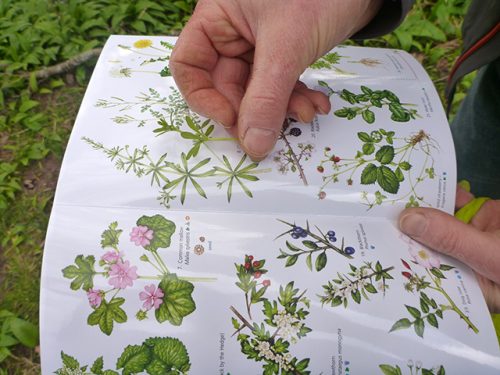
Recently I took an edible plants identification chart I’d done the natural history illustrations for on a walk, to test it out with friends.
I’ve written blogs on foraging before as it’s something I do a fair amount of, but this “road test” of one of my i.d. charts was a first.
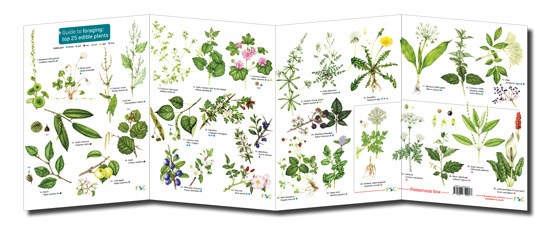
On a forage for wild garlic
We were looking out for anything edible, but were mainly after wild garlic to make pesto with.
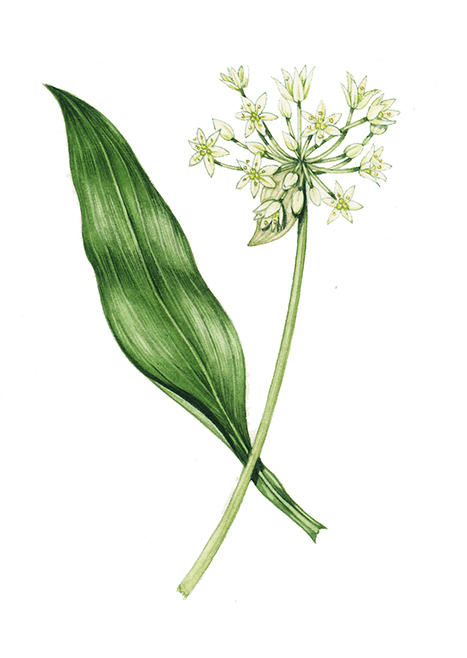
Wild Garlic Allium ursinum botanical illustration – this one I did a while back is too dull in colour.
I’ve illustrated wild garlic several times over the years, and the illustration I recently completed for this edible plants chart is by far my favourite.
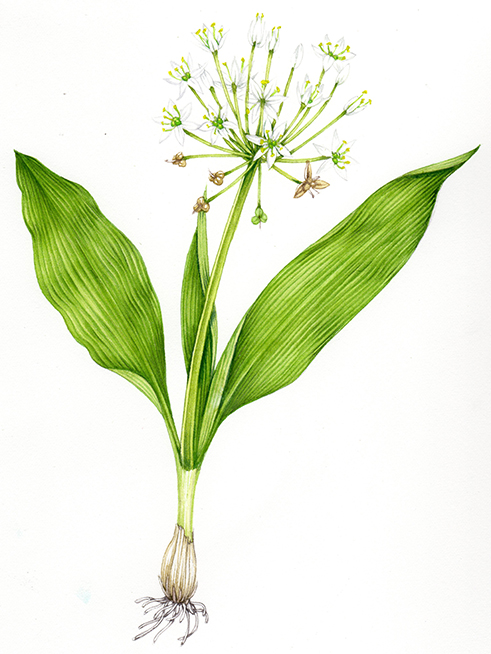
Wild Garlic Allium ursinum botanical illustration – I much prefer the brighter green and the fact that there’s more of the plant (and the roots) showing.
We went on a forage up Cusop Dingle (near Hay-on-Wye), and it didnt take long to find an enormous amount of wild garlic growing on wither side of the track.
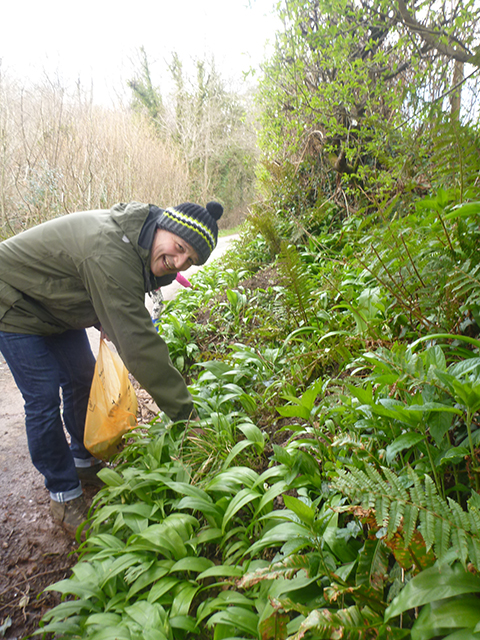
Wild Garlic growing in Cusop Dingle
We scrutinised the plant and the illustrations, not because we weren’t sure of ourselves (there’s no mistaking wild garlic, it smells so delicious and strong!) but because everyone was keen to put me to the test.
We weren’t only gathering wild garlic, but also collected wild garlic buds; once these are pickled they are absolutely delicious.
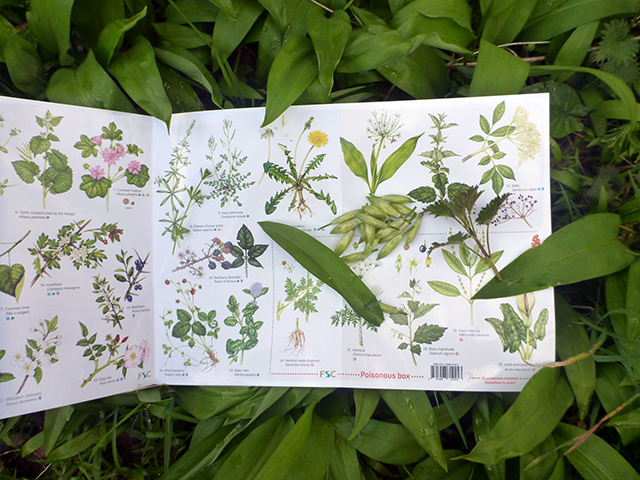
Wild garlic buds on the edible plants chart.
There was a brilliant moment when my friend’s 9 year old daughter declared that the illustrations were rubbish. She claimed they looked nothing like the plant. The best bit was that she stuck to her opinion even when I told her who did the pictures. Ah the honesty of youth! Here’s hoping she’s in a minority…

Being taken to task on the accuracy of my illustrations by a 9 year old
Other plants to forage: Cleavers, Hawthorn and nettle
We picked lots of garlic, then looked to see what else was around. The children balked at raw hawthorn leaves. My other half and I failed to get excited by Cleavers Galium aparine. However, it was gratifying to see that the pictures and the specimens did match.
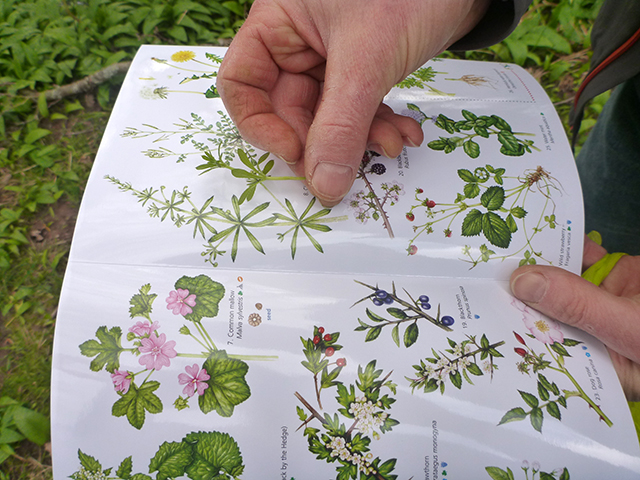
Cleavers and the edible plants chart
One other plant we did gather and take home was the common Stinging nettle.
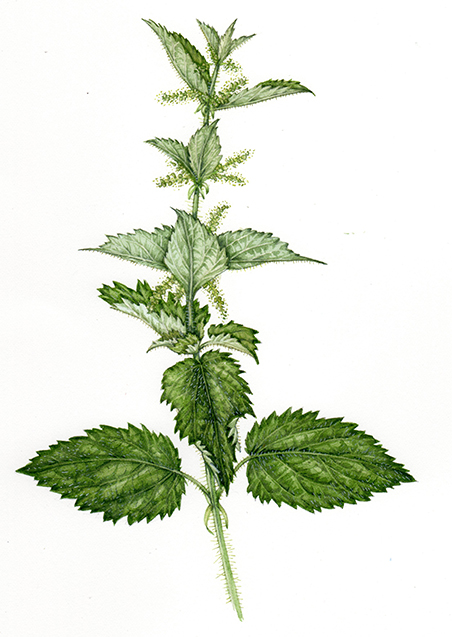
Stinging nettle, Urtica dioica
Cooking with the products of our forage
We made a delicious soup by adding stock and potatoes. It’s a most wonderful green colour and everyone ate loads.
The wild garlic pesto is so simple to make. Take wild garlic, olive oil, mixed nuts, and parmesan, then whiz them together.
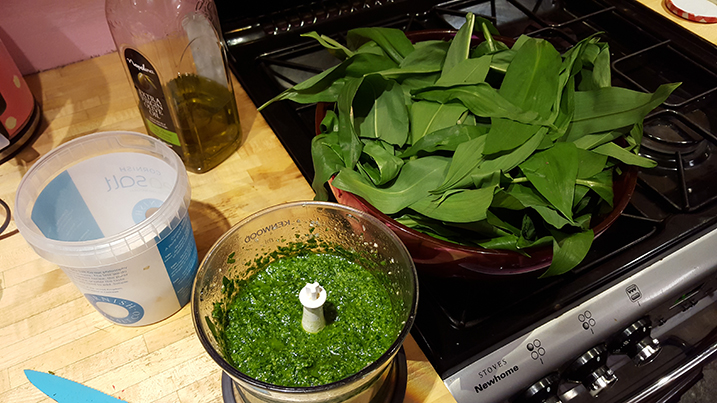
Making Wild garlic pesto
Despite the reservations of my 9 year old guest, I think the chart passed the test on being used in the field. We have ended up with some truly delicious Wild Garlic Pesto!
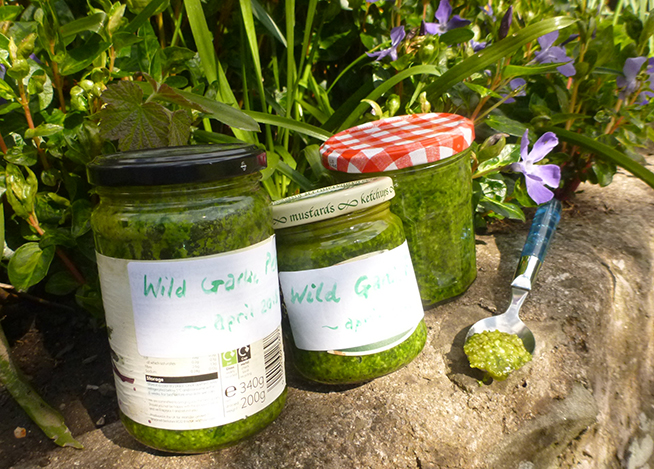
Wild garlic pesto – we’ve got 6 jars of it!

